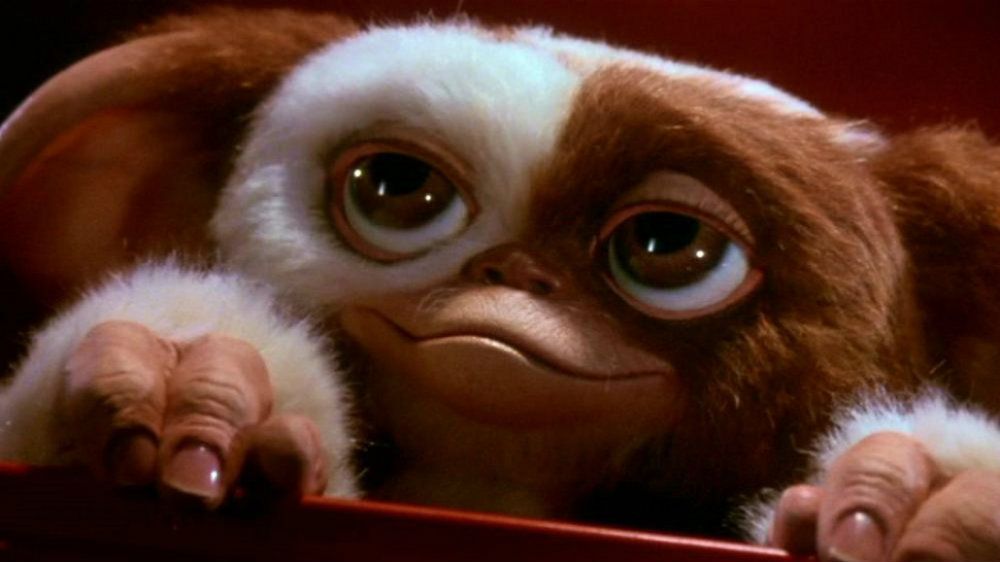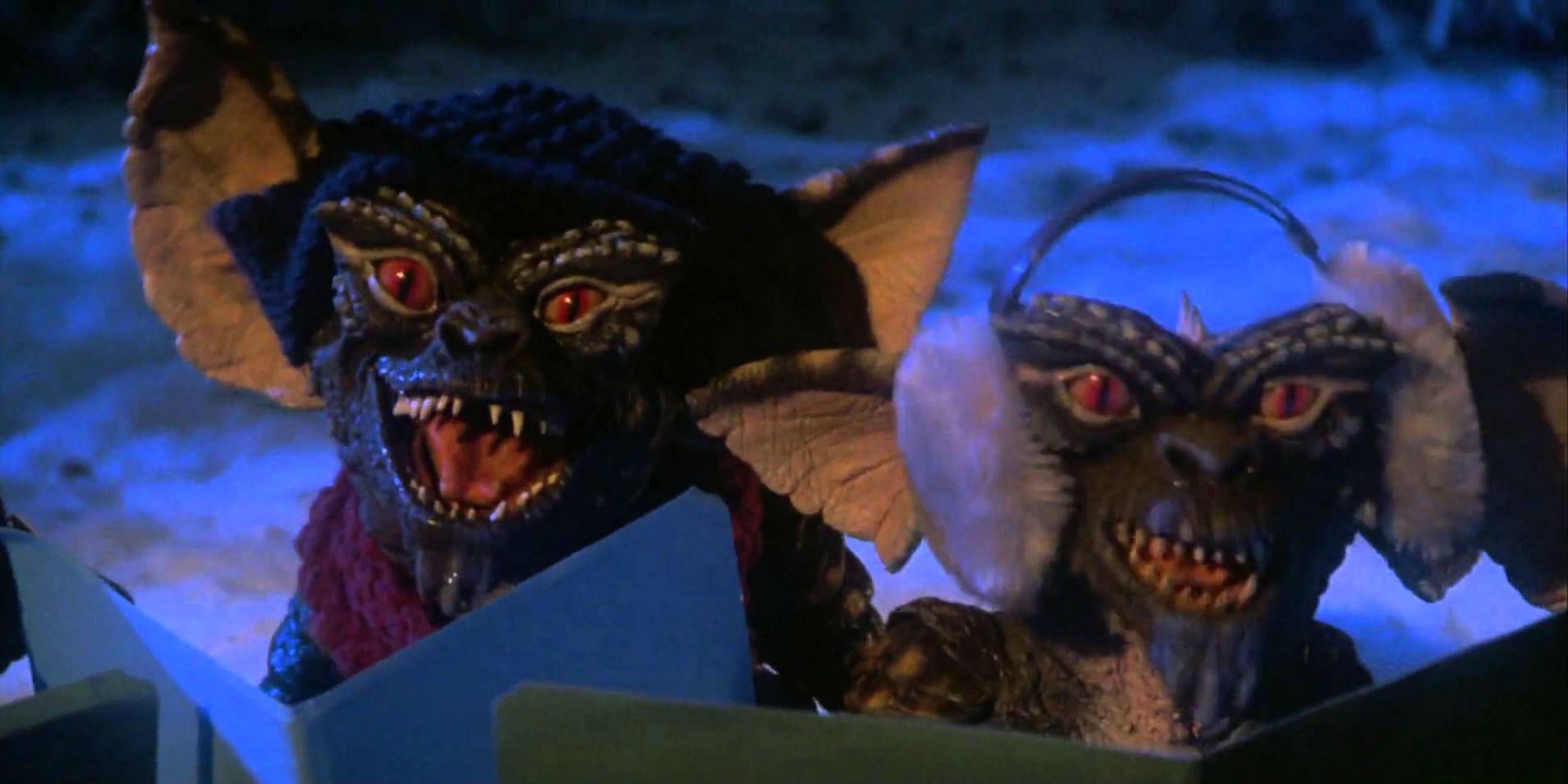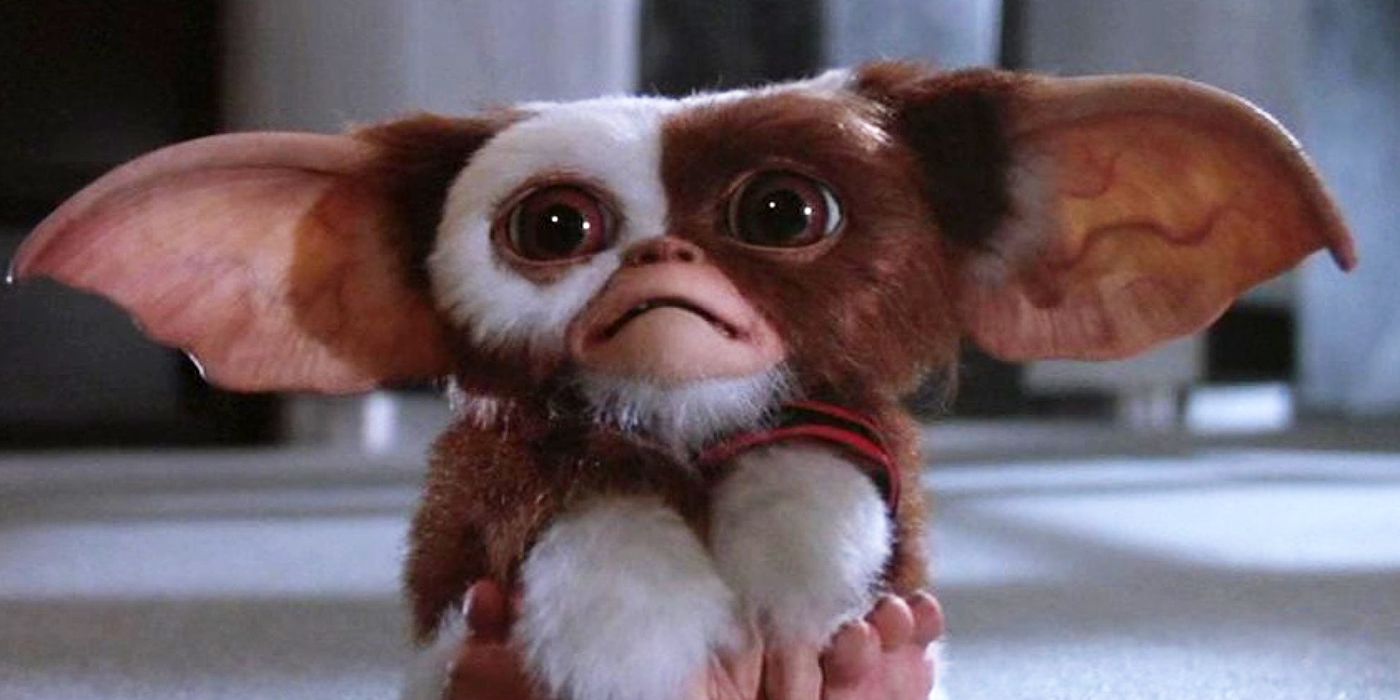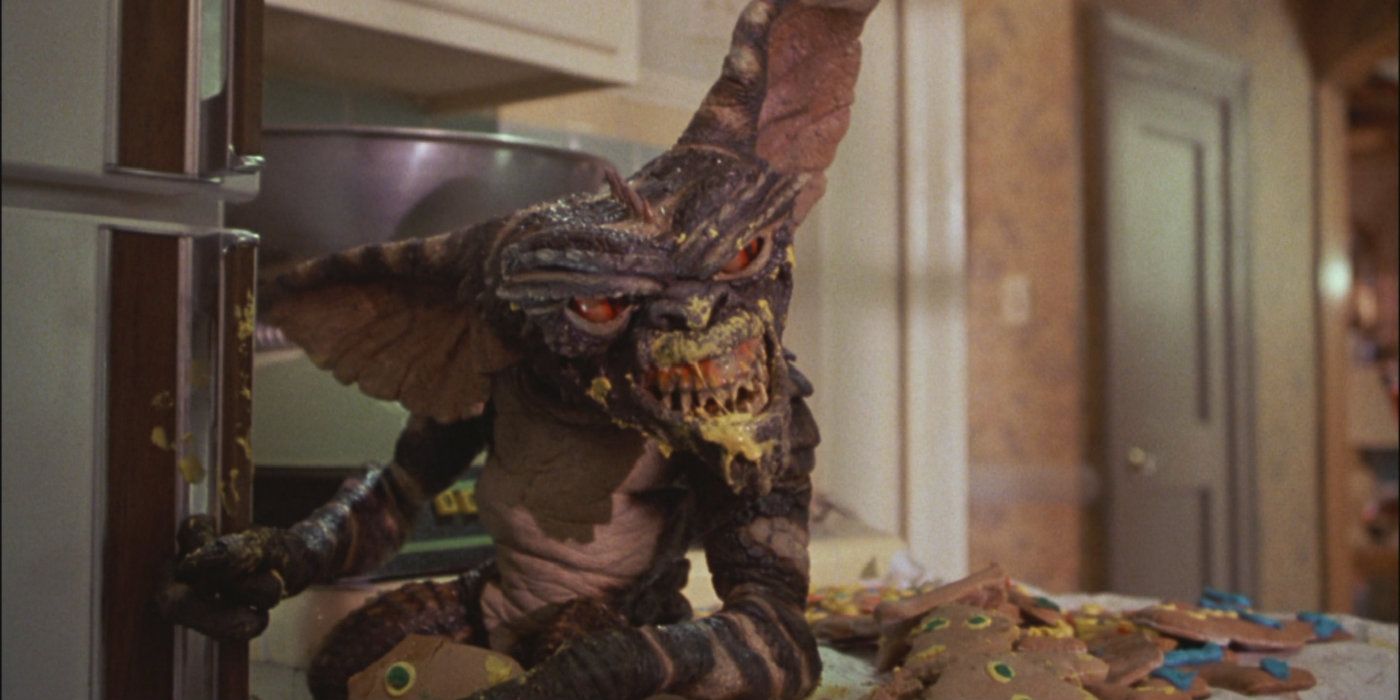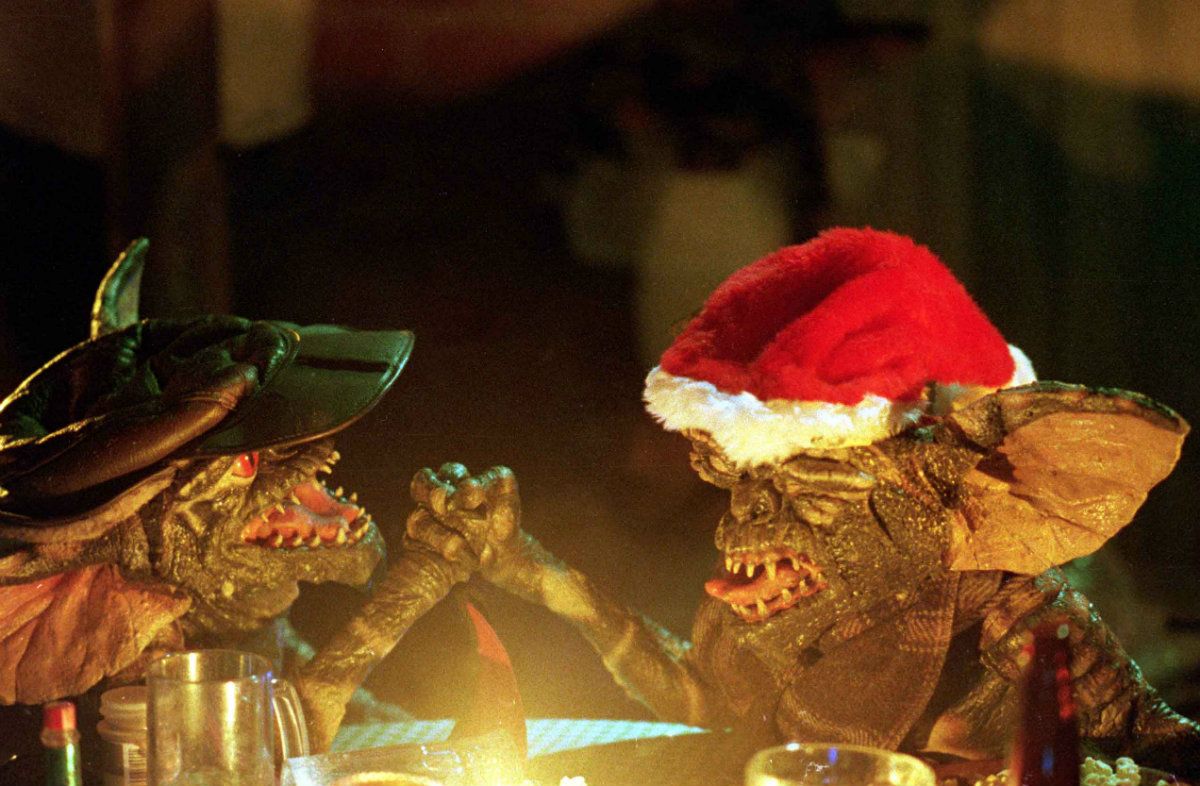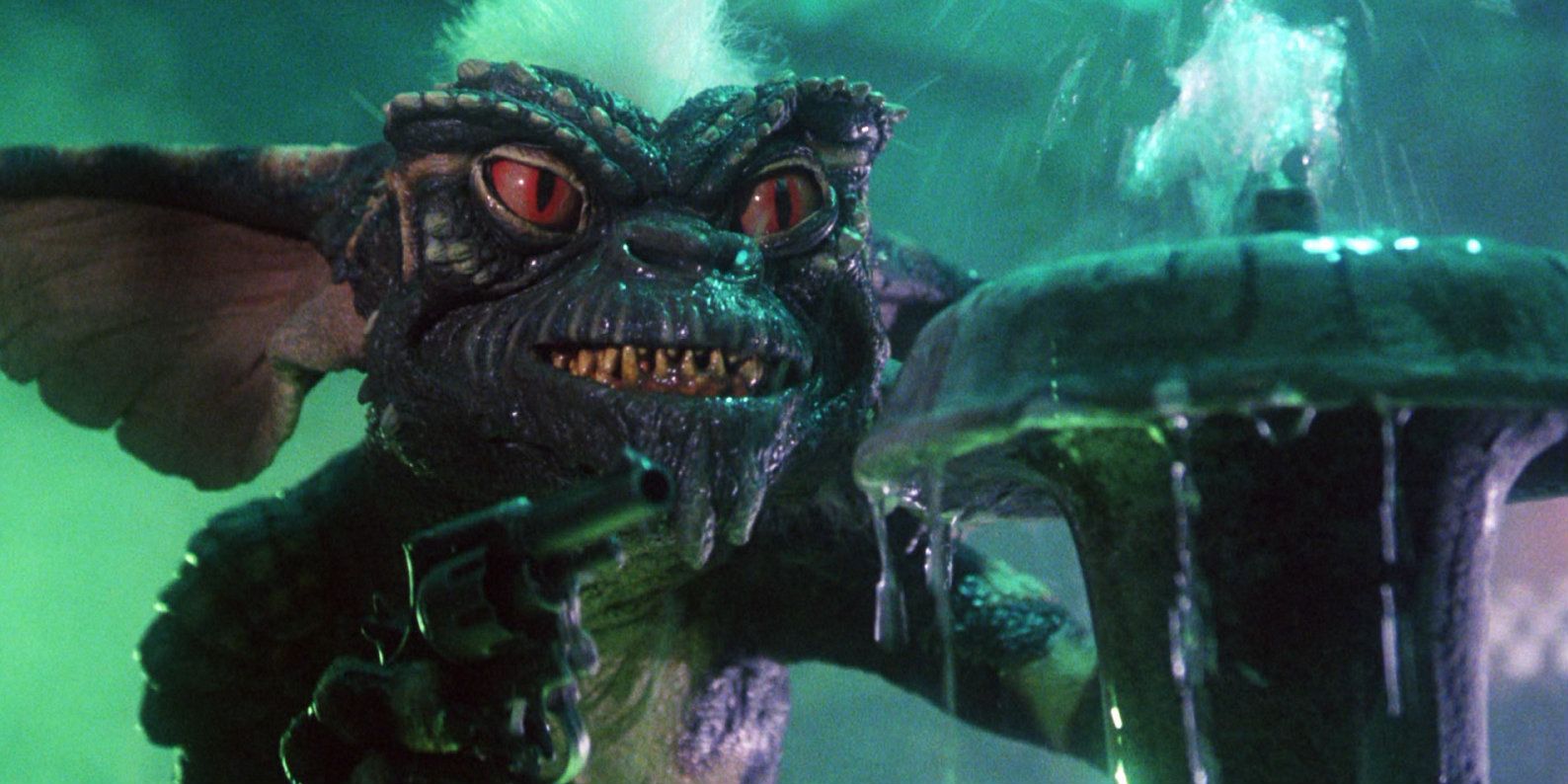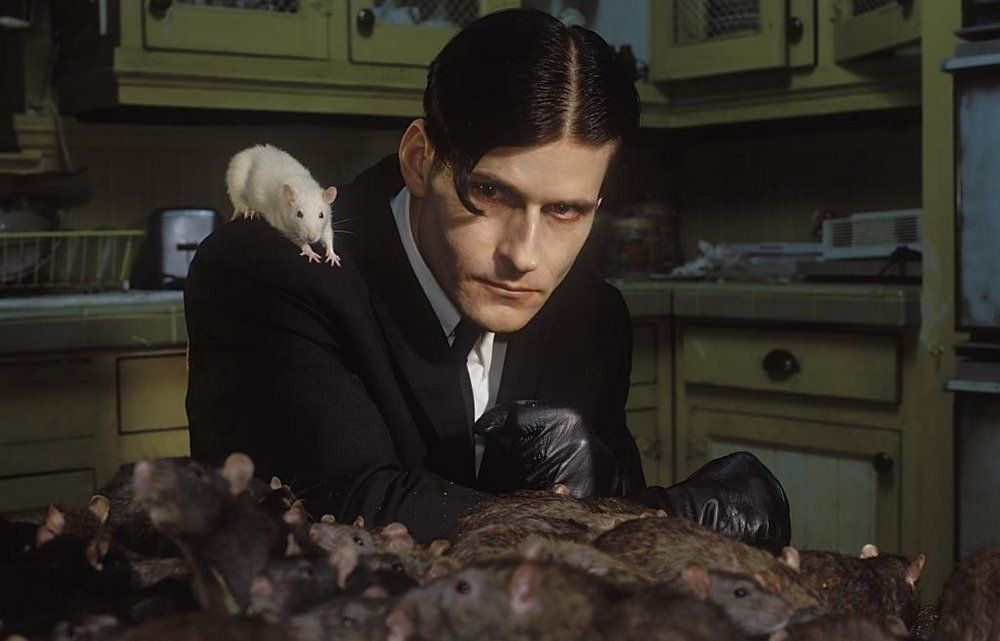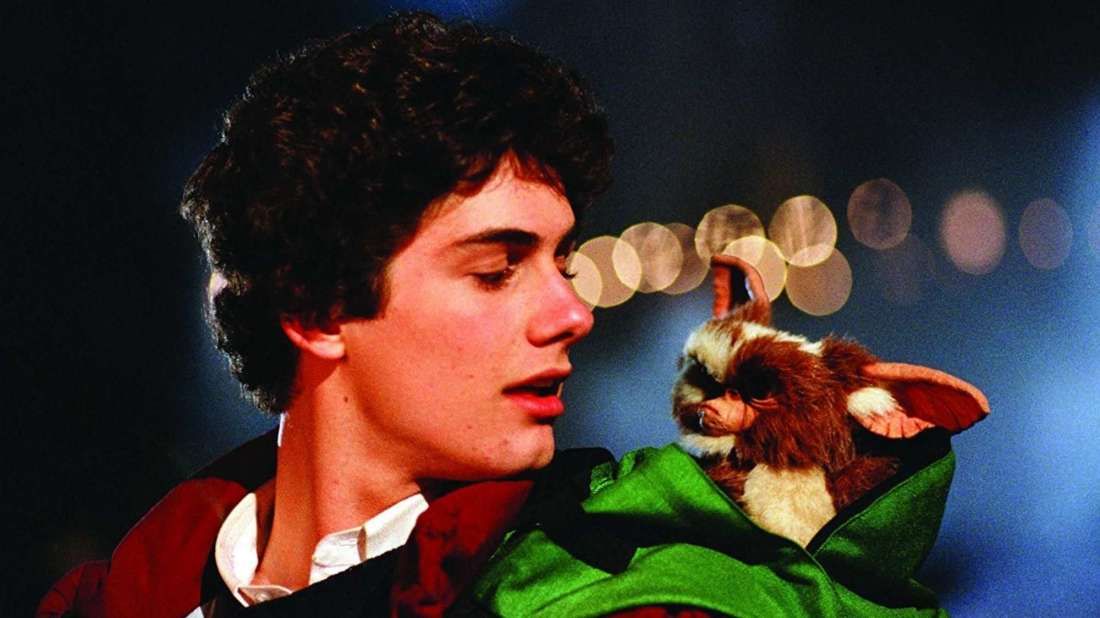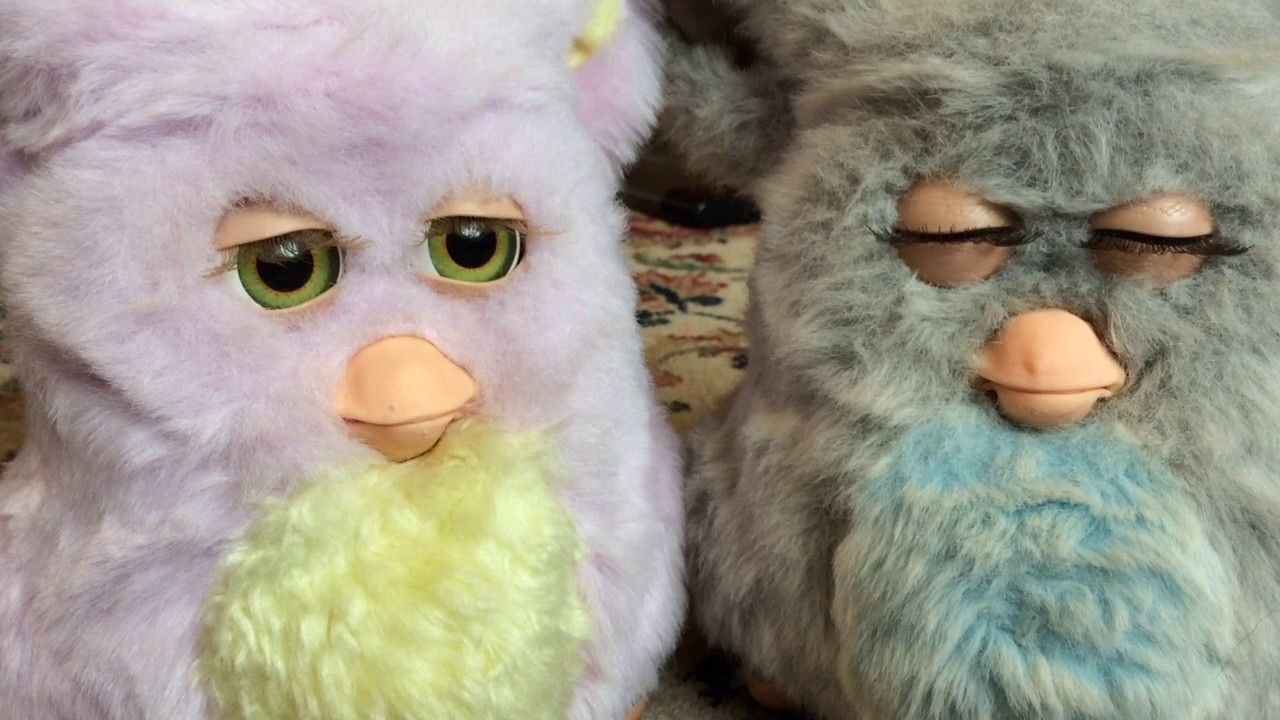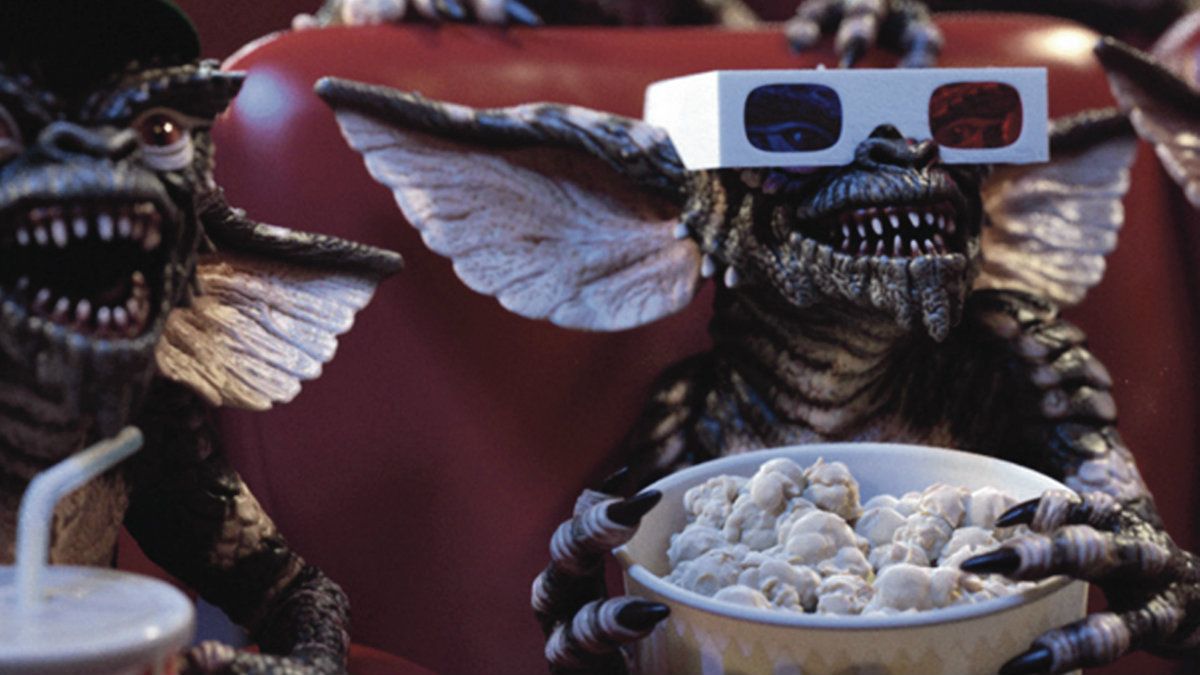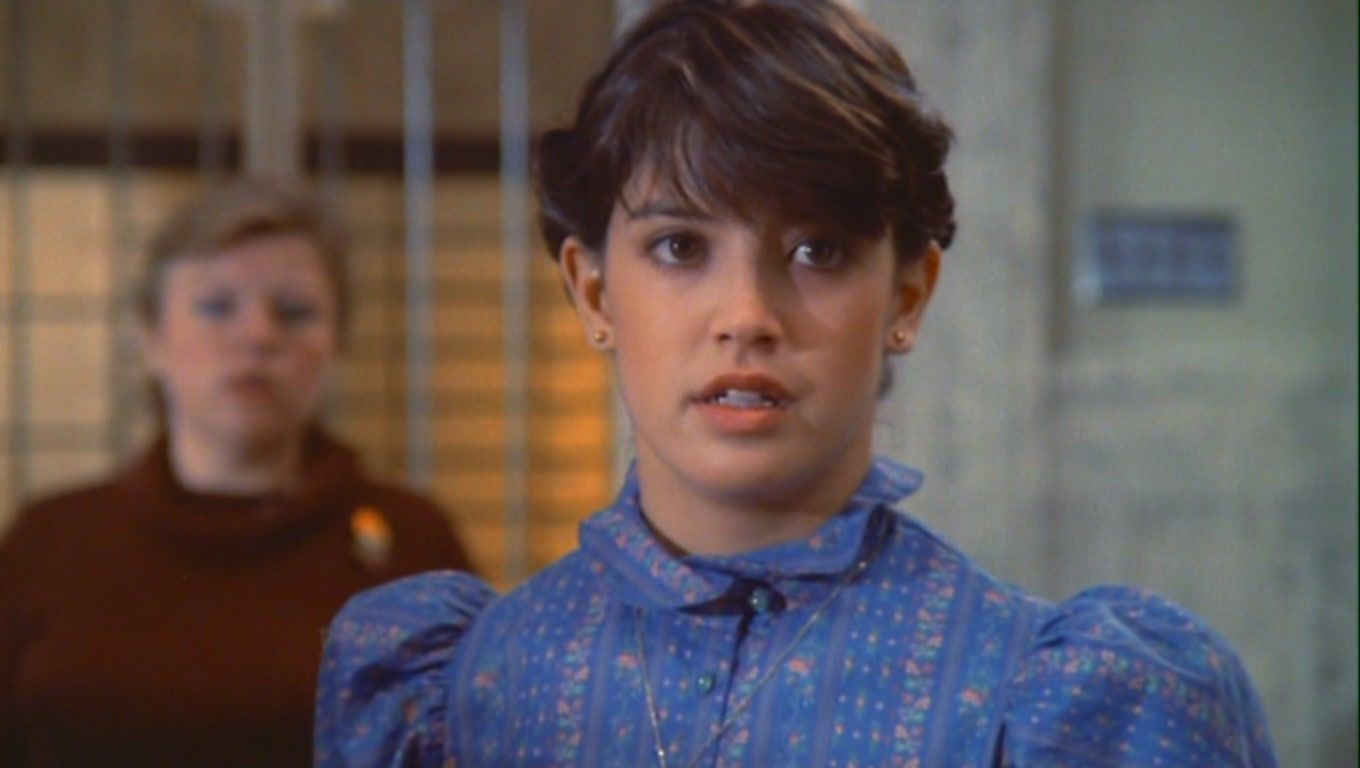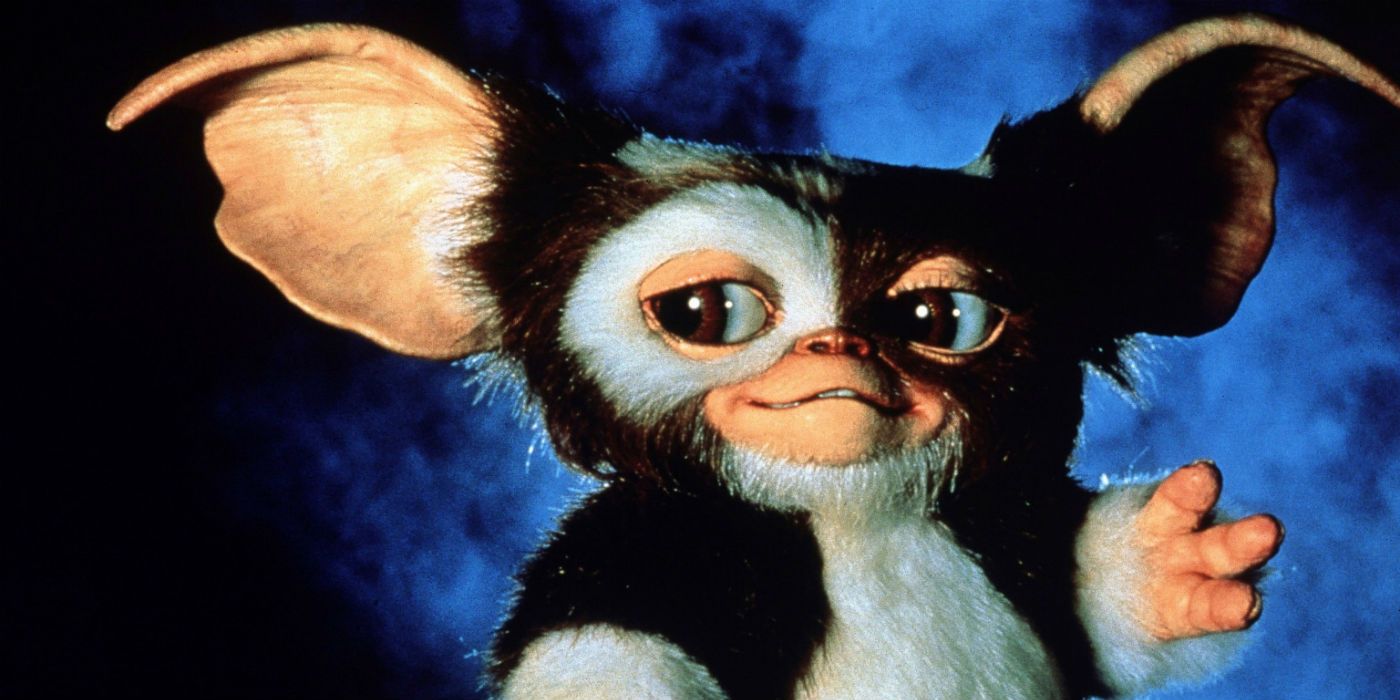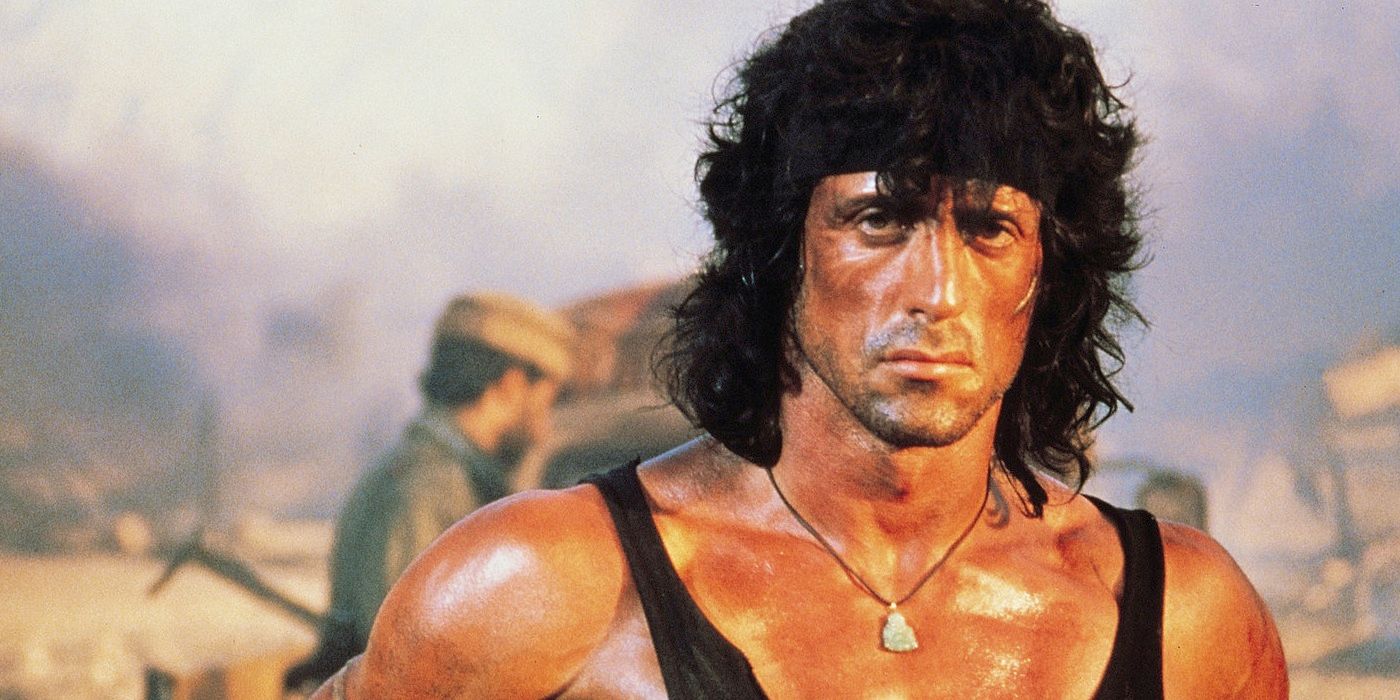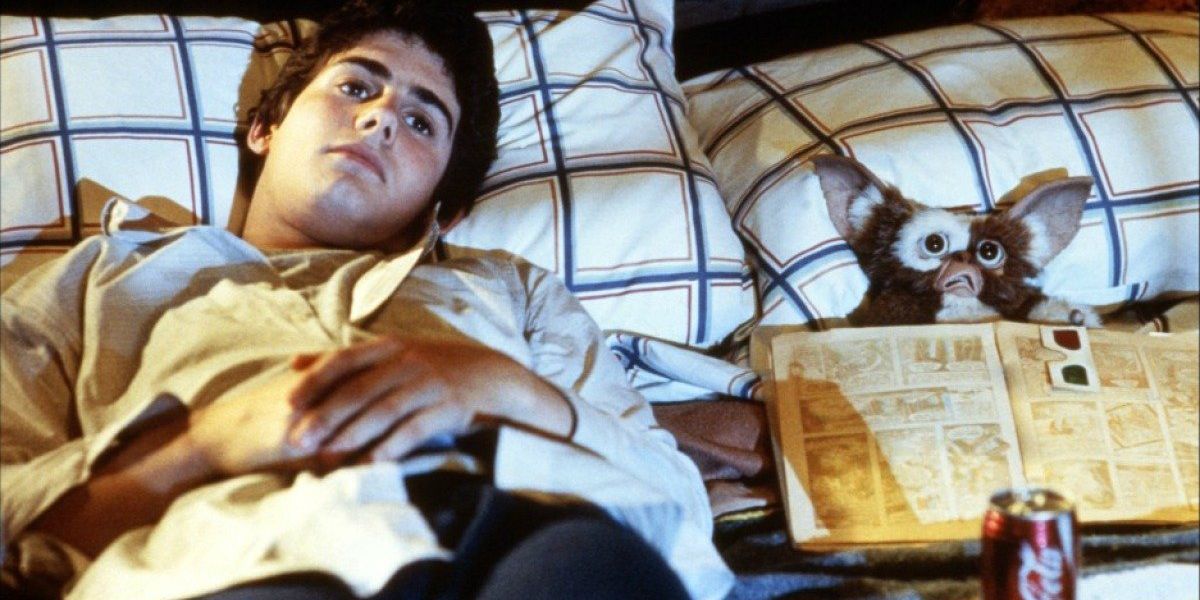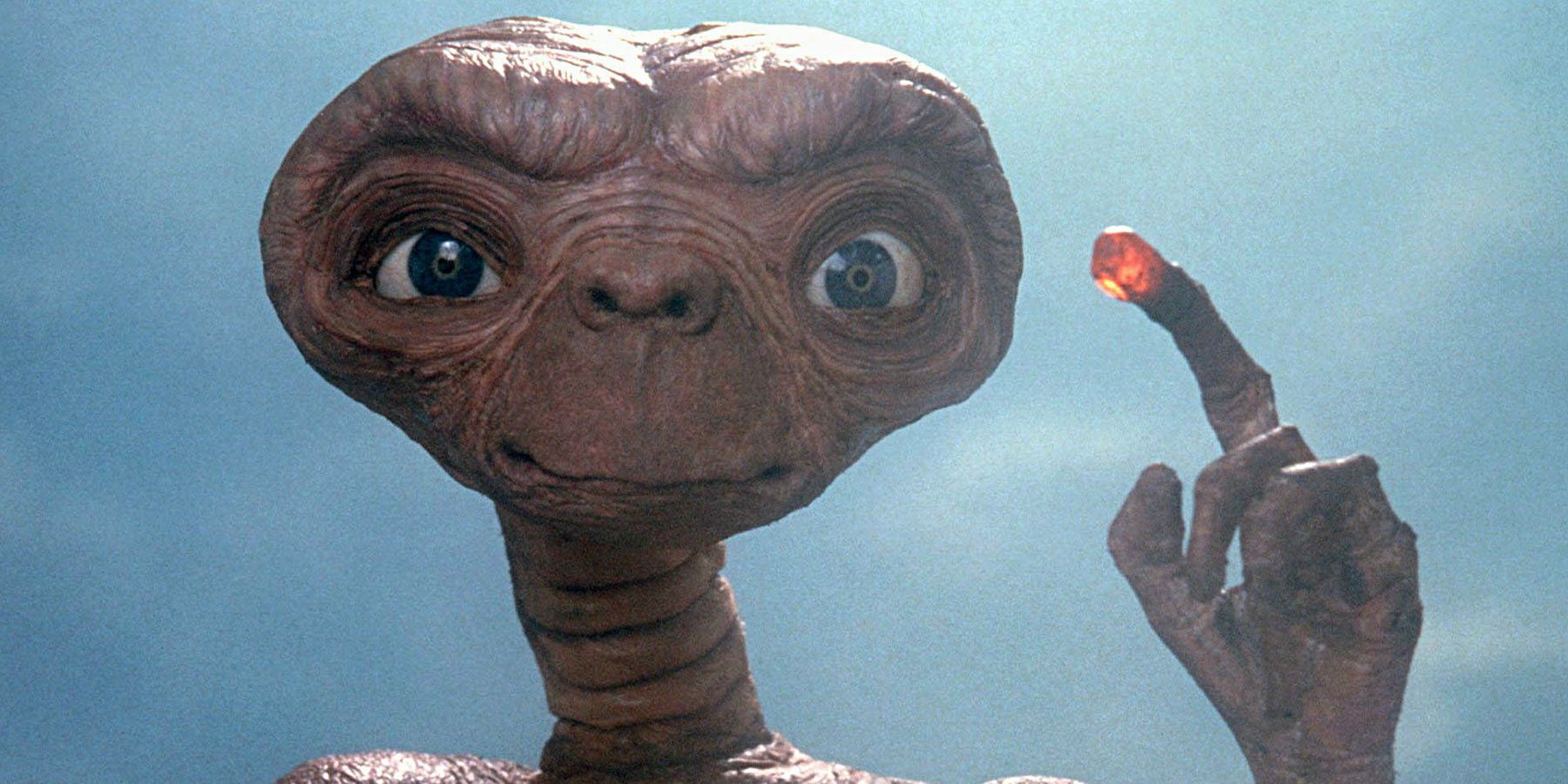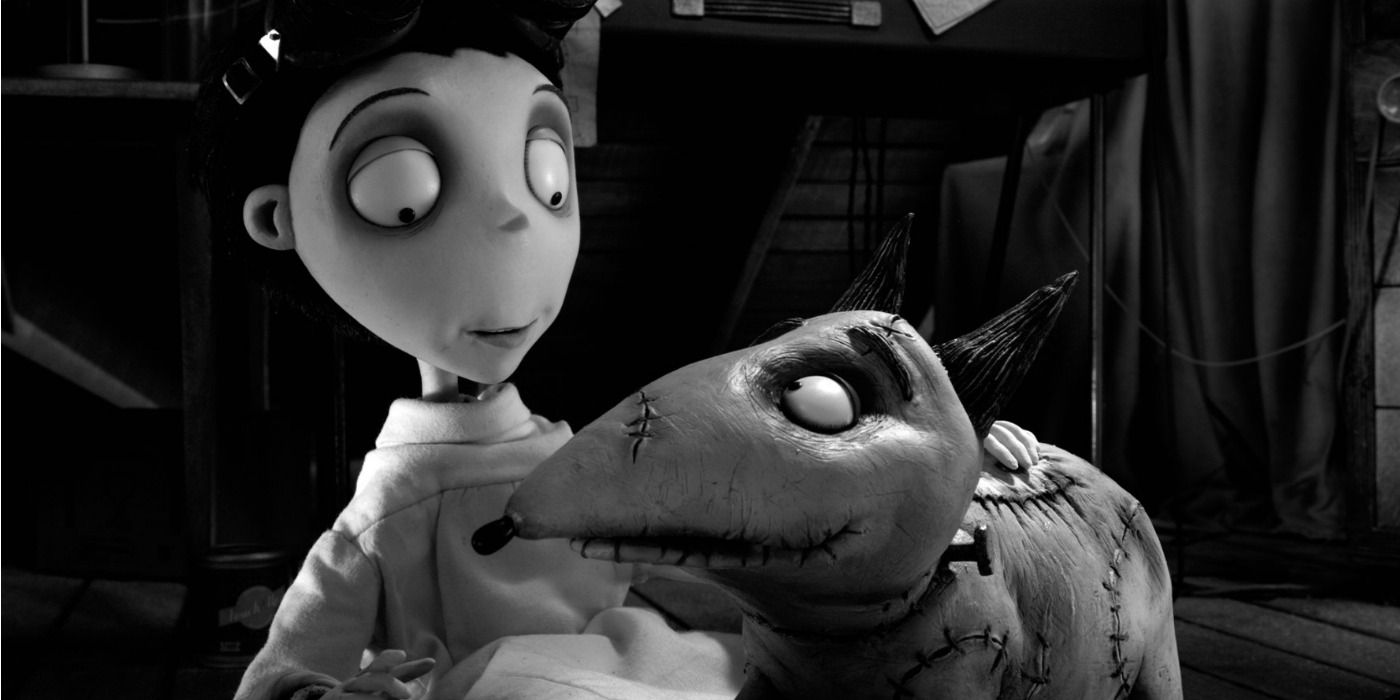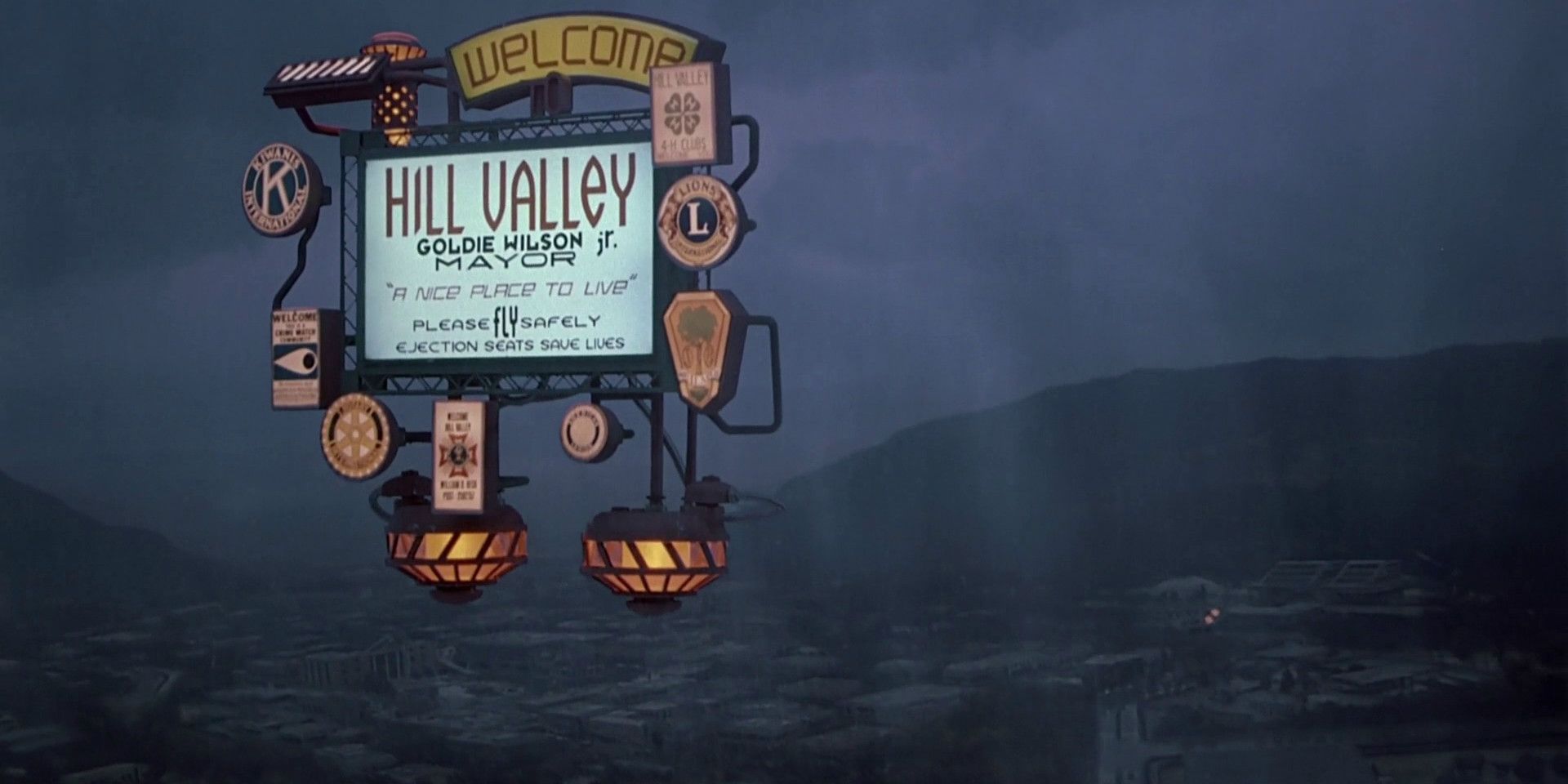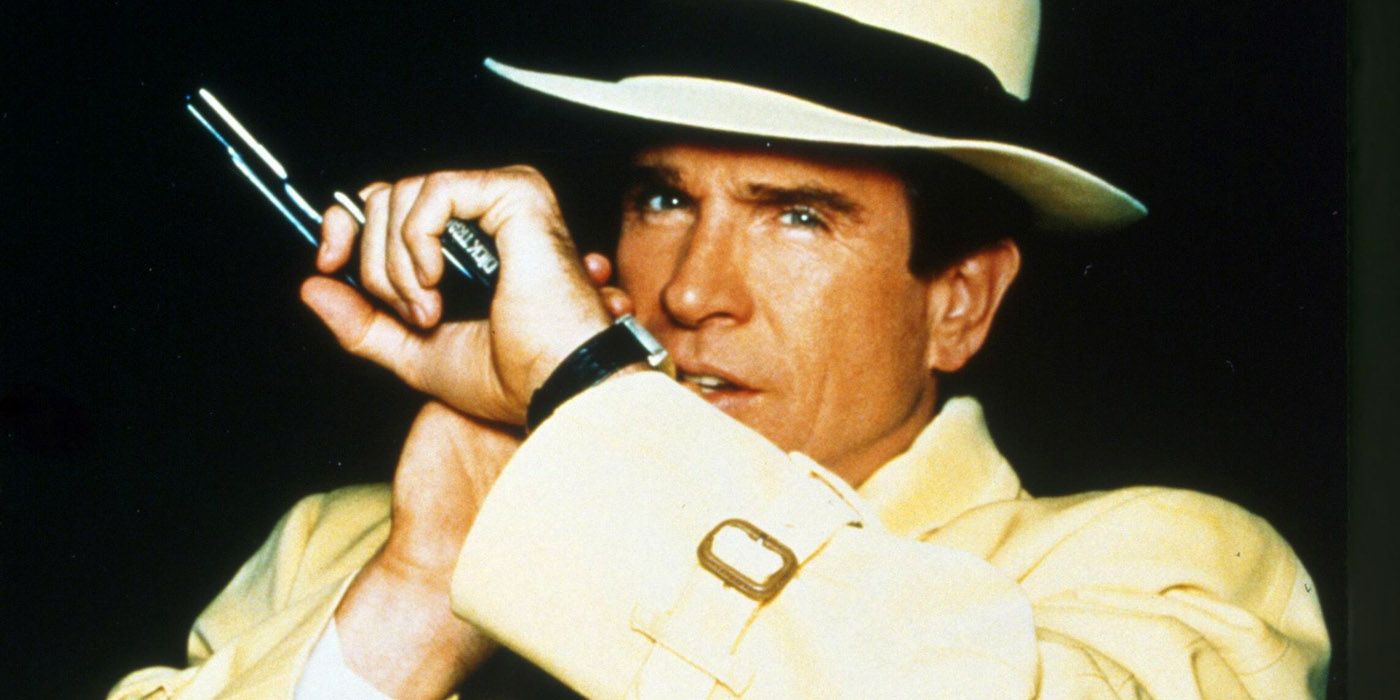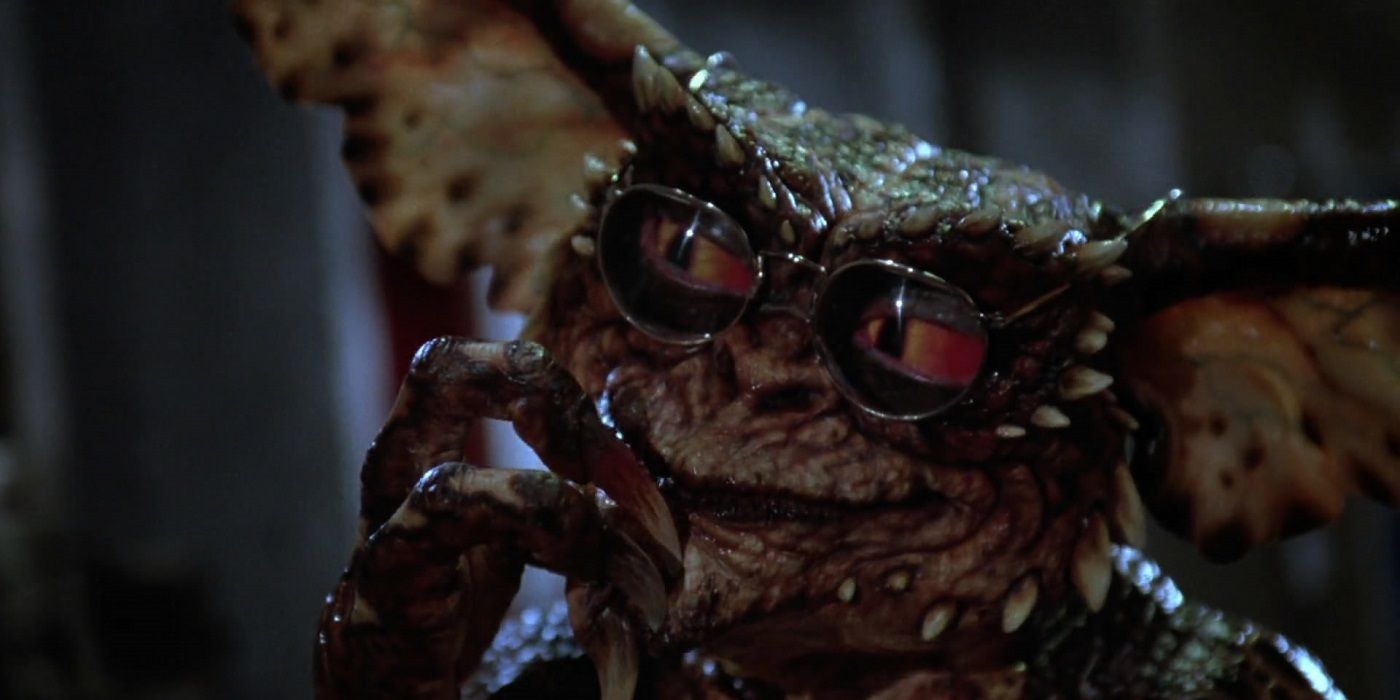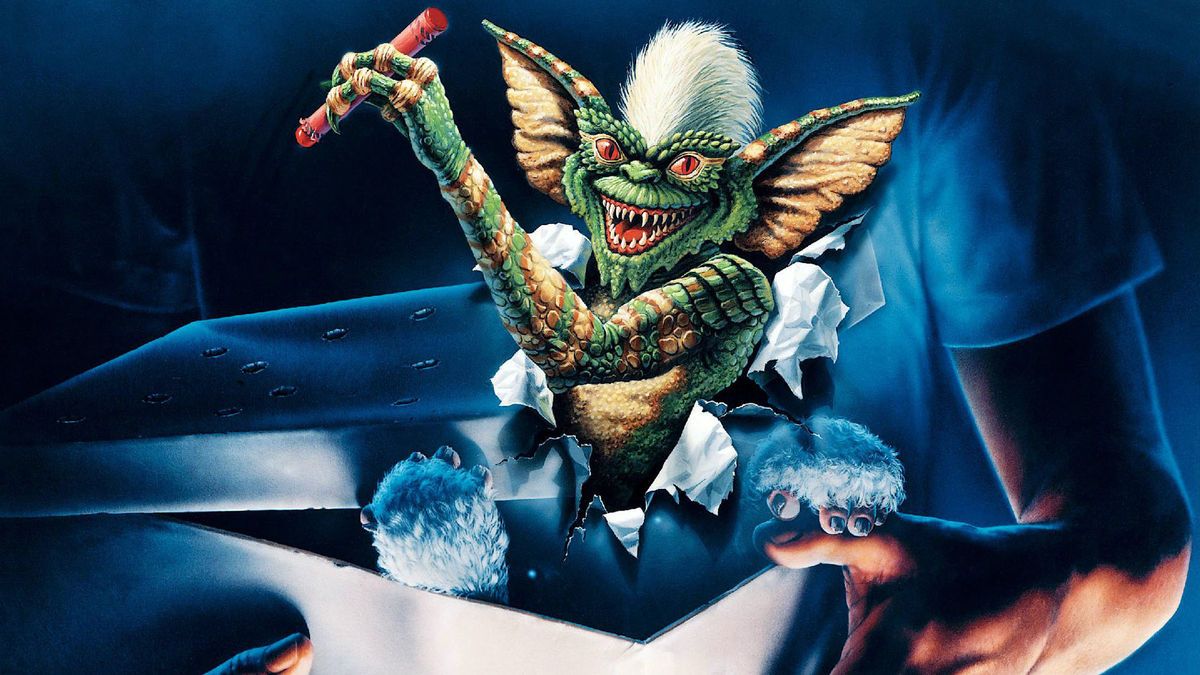Gremlins, released in 1984, had something of a dream team behind it-- it was written by Chris Columbus (The Goonies, Adventures in Babysitting); directed by Joe Dante (Twilight Zone: The Movie); scored by 18-time Academy Award nominee Jerry Goldsmith; and overseen by none other than Steven Spielberg.
It debuted at #2 at the box office, but to be fair, it opened next to Ghostbusters, and remarkably, it only fell about one million dollars short of the top spot.
A unique blend of comedy and horror, as well as seeming like a family movie but being way too intense for most young children-- many of whom loved it anyway-- Gremlins could've easily gone the way of most scary movies with a funny bent and been relegated to cult B-movie status. But perhaps because of the people involved, and due to being released at a time when mainstream audiences were at their hungriest for that sort of thing, Gremlins wound up becoming a surprise box office hit that still you can still find running on basic cable decades later, usually around Christmastime.
Such was the success of Gremlins that it even spawned a theatrical sequel in 1990 called Gremlins 2: The New Batch, which took things even further into a dark comedy direction and was less ambiguous about not being a kid's movie.
A third Gremlins movie has been discussed in various capacities for most of the 28 years since Gremlins 2, and it looks like it might finally be happening-- but we'll get to that later.
Here are 20 Crazy Secrets Behind The Making Of The Gremlin Movies.
The Gremlins Were Almost Played By Monkeys
Released many years before CG was a remotely viable option, the titular creatures in Gremlins had to be done entirely with practical effects. For the most part, that meant puppets, which proved to be a lot of work and cause a lot of stress on the cast and crew of the film.
Knowing how difficult it was going to be to have to build that many Gremlin models, one idea involved just putting monkeys in Gremlin outfits, primarily for scenes with crowds of Gremlins or ones that have them doing a lot of movement, climbing, and hanging.
That idea was nixed the moment tried putting a Gremlin mask on a monkey as a test.
It freaked the poor animal out so badly that it ran amok and wrecked director Joe Dante's office.
Gizmo Has A Famous Voice
Gizmo, the cute little Mogwai who serves as the catalyst for all the events in the Gremlins cinematic universe, has a very distinctive voice. Surprisingly, the high-pitched sound of Gizmo's vocals isn't the result of audio trickery of any kind, nor do they come from a woman or a child.
The voice of Gizmo is actually performed as-is by comedian, actor, and television host Howie Mandel.
Mandel had already been using the voice in his stand-up act, and would later use it again for the lead character in the '90s animated series Bobby's World.
However, Mandel didn't do Gizmo's famous song-- for that, legend has it that Gremlins scorer Jerry Goldsmith enlisted a 13-year-old girl from his synagogue to do Gizmo's lullaby.
So Do The Gremlins
While the Gremlins don't actually say all that much-- though they do occasionally utter a recognizable English word or two-- their voices are still provided by human actors rather than any of the usual foley artist magic that is typically used to make fictional monster noises in movies.
The bulk of the voice work of the Gremlins themselves was done by legendary voice actor Frank Welker, who is most famous for voicing Scooby-Doo's Fred Jones for almost the entirety of that character's animated existence. Other Gremlin sounds were done by Michael Winslow of Police Academy and Spaceballs fame whose voice is a sound effects machine unto itself.
It has been said that the famous "Gizmo ca-ca!" line-- the closest thing there is to an actual "Gremlin quote"-- was delivered by Winslow.
The Gremlins' dialogue was mostly ad-libbed
While we're on the subject of the Gremlins' voices, what about their "dialogue?" How does one actually write out what noises a Gremlin makes, and decide when they should make which noises? Turns out, one doesn't-- the best thing to do is just let the performers figure it out on the fly.
Instead of trying to plan what the voice actors behind the Gremlins should "say," the performers were given the freedom to just ad-lib and react to what was happening in a given scene in the moment. As a result, their reactions came off as more natural, and helped add to the illusion that the Gremlins are real creatures.
This made translating Gremlins into different languages much easier.
Each respective country's voice actors were also allowed to just go with their guts in the moment.
The PG-13 rating was created because of Gremlins
It might seem pretty obvious that Gremlins is a movie not best suited for young children, but that wasn't apparent when the movie was first released. Many parents complained that what they thought was going to be a family-friendly movie ended up being too scary and violent for their children.
Before you condemn those parents for not knowing better, it's important to note that Gremlins only carried a PG rating, which generally suggests a movie that is suitable for all ages with just light guidance from parents.
In fact, between the Gremlins controversy and similar uproar over Indiana Jones and the Temple of Doom, Spielberg himself suggested the implementation of a new rating in between PG and R for such films. Thus, the PG-13 rating was born.
They Were Inspired By A Rodent Problem
What kind of sick mind could possibly think up the premise of Gremlins? What dark, twisted thing must've happened to Chris Columbus to make him create such a horrifying vision? Actually, the inspiration was a lot less dark-- and a lot more relatable-- than you might think.
While attending film school in New York City, Columbus was living in a loft that he says was a nice place to live during the day-- but at night, "what sounded like a platoon of mice would come out, and to hear them skittering around in the blackness was really creepy."
With that, he decided to write a story about an army of creatures causing mischief under the cover of night, which became his script for Gremlins.
The Expensive Puppets Made The Studio Paranoid
While Gremlins was a modestly-priced movie for such a visual spectacle, at only $11 million, it was originally intended to be made for even cheaper. Much of the blame for the budget exceeding what it was supposed to be was due to the expense of creating all of those Gremlin puppets and props.
According to actor Zach Galligan, the high cost of the movie's creature effects made the studio particularly paranoid. In fact, they were so concerned about protecting their investment that Galligan says every member of the cast and crew had to open the trunks of their cars as they left the set each day.
They had to prove that they weren't trying to sneak away with one of the Gremlins.
We aren't convinced sure anyone would've risked trying to take one of the terrifying creatures home with them anyway.
The Furby Lawsuit
If you thought that Furby toys-- which first debuted in 1998 and have experienced several revivals in the ensuing years-- looked eerily similar to Gremlins' Gizmo, you aren't alone. Warner Bros. thought the exact same thing, and thought it was worth suing the makers of Furbies over.
Tiger Electronics, which created the toy and owned it until Hasbro took over in 2005, didn't disagree-- it agreed to pay Warner Bros. a seven-figure settlement and also promised to redesign the toys to look less Gizmo-like. While the new-look Furbies didn't look terribly different from the originals, it was apparently enough to placate Warner Bros.-- though the cash likely also helped.
As a footnote to all this, The Weinstein Company announced plans to make a Furby film back in 2016, though there has yet to be any additional information revealed about it.
The Canceled Sequels
It took a surprising six years to finally get a Gremlins sequel into theaters-- which, coincidentally, is only one year longer than the gap between Ghostbusters and Ghosbuters II. Like that franchise, much of the reason for the delay was nobody agreeing on what the sequel should be, along with the original director being reluctant to do it.
After the success of Gremlins, the studio immediately approached Joe Dante to make another one, but he declined, not wanting to do the same thing again so soon.
In the meantime, several ideas for a Dante-less Gremlins sequel were pitched, including the creatures traveling to and terrorizing Las Vegas, and even having them go to outer space. Both of these ideas were scrapped before Dante returned with the vision of Gremlins 2 that did get made.
Whatever Happened To Phoebe Cates?
By the time she appeared in Gremlins, Phoebe Cates was one of the biggest rising stars in Hollywood. She remained an in-demand actress for the rest of the '80s, right through to reprising her role as Kate Beringer in Gremlins 2.
Then, within four years, she quit acting almost entirely, only appearing in one film since 1994-- 2001's The Anniversary Party, which was directed by longtime friend and Fast Times At Ridgemont High co-star Jennifer Jason Leigh.
So what happened? Why did Cates step away from her acting career while it was still peaking?
Simply put, she wanted to focus on her family.
As husband Kevin Kline continued acting, Cates became a full-time mother and has largely stayed out of public life.
Gizmo Was Meant To Become A Gremlin
The "rules" that owners of Mogwais have to follow don't really hold up to much scrutiny. For instance, when does "after midnight" just become a new day? Another major logic leap in the rules is that Mogwai are seemingly aware of those rules, and actively do things to force humans to break them so that they can turn into Gremlins.
Well, except for Gizmo who, for whatever reason, seems to be the only Mogwai that doesn't actually want to become a much more powerful Gremlin. It makes a lot more sense when you learn that Gizmo was originally supposed to become a Gremlin right alongside his "offspring."
In fact, was going to become the Gremlins' leader Stripe.
Luckily, Spielberg recognized his potential as a hero character that audiences would fall in love with, and Gizmo stayed Gizmo.
Rambo approved of the movie
One delightfully ridiculous moment in Gremlins 2 sees Gizmo finally toughen up and try to get revenge on his evil brethren, modeling his newfound confidence after a Rambo movie that he watches on television. The result is cute, cuddly little Gizmo donning a bandanna, a flaming bow and arrow, and the meanest scowl his adorable face can muster.
With the Rambo film series nor the character itself not being Warner Bros. properties, permission had to be granted for that moment, primarily in showing footage from the movie.
Rather than having to jump through all kinds of hoops by asking lawyers or studio execs or any of that nonsense, Gremlins 2 producers just went straight to Sylvester Stallone himself, who gave his permission to be parodied for the scene.
The Crew Hated Gizmo
One of the worst moments for poor Gizmo in either of the Gremlins movies is when he is attached to a spinning dart board in the first movie. Surprisingly, this moment was inspired by real-life disdain for Gizmo that mirrored how the Gremlins felt about him-- and that disdain came from the film's crew.
Partly due to its size and the tiny parts required to keep it running, the animatronic Gizmo broke down. A lot. Numerous delays were caused by Gizmo malfunctioning, with long stretches where crew members had to just stand around and wait for him to be repaired.
The "Gizmo on a dartboard scene" came from a list the crew had made of the various awful things they wanted to do to him.
Having the scene in the movie was cathartic for them.
Emilio Estevez and Judd Nelson almost played Billy
The male lead for Gremlins, Zach Galligan, also saw his career forever changed as a result of the movie's success. In retrospect, given how much the studio had at stake in the movie and how high Steven Spielberg's hopes were for it, it might seem surprising that an unknown was given the coveted part. In fact, it was Galligan's first professional acting role.
To be sure, there were bigger names initially circled for the role, with Brat Pack stars Judd Nelson and Emilio Estevez being among those who were almost offered the part.
It was during Galligan's audition with the already-cast Phoebe Cates that Spielberg became convinced they had found their Billy, as Spielberg was impressed by the actors' chemistry together.
The E.T. Easter Eggs
Even the films of the era that Steven Spielberg didn't direct but was a producer on, such as The Goonies and Back to the Future, have his fingerprints all over them. This is certainly true of Gremlins, which bears many of the legendary figure's trademarks. It also contains a number of references and tributes to Spielberg and his work, including two that are easy to miss unless you're familiar with working titles.
There is a movie theater marquee visible near the beginning of Gremlins that clearly lists two movie titles: "A Boy's Life," and "Watch the Skies."
While these might sound like generic-sounding fictional movie names, they both have a very specific origin. They were the working titles for Spielberg's E.T. the Extra-Terrestrial and Close Encounters of the Third Kind, respectively.
Tim Burton Almost Directed
Once Steven Spielberg set about getting the Gremlins movie produced, the first big decision to be made was to find a director. While Joe Dante was eventually chosen, in large part because of his work on Twilight Zone: The Movie, Spielberg initially had another director in mind.
A short film called Frankenweenie had Hollywood buzzing in the early '80s, and everyone wanted to work with its creator, a newcomer named Tim Burton. Spielberg thought Burton would be a great choice for Gremlins, and the movie would've been the director's first feature film. Unfortunately, that's exactly what got in the way of him getting the job.
Warner Bros. was hesitant to trust the movie to such an inexperienced director.
Burton's first film ended up being Pee-wee's Big Adventure, released one year later-- distributed by Warner Bros.
The Back to the Future Connection
Did Hill Valley, Back to the Future's fictional town, seem a little familiar to you? How about Gremlins' Kingston Falls? Depending on which of those two movies you saw first, you likely felt a sense of deja vu while watching them, and there's a good reason for that.
Both movies were filmed almost entirely within the same set, located on Universal Studios' Hollywood backlot. As a matter of fact, the set-- most commonly referred to as Courthouse Square-- was first used in 1948 and has served as a location for over 50 other movies, TV shows, and other productions.
Among the projects that have utilized Courthouse Square are Magnum P.I., Escape From L.A., The Incredible Hulk (TV series), Buffy the Vampire Slayer, Bruce Almighty, Batman & Robin, The Cat in the Hat, Falling Skies, and most recently, NBC's 2016 live production of Hairspray.
Box office sabotage
These days, it's no big thing for comic book movies to be massive box office successes that break one record after another. But in 1989, when Tim Burton's Batman was released, the various records it broke were a really big deal-- among them, setting the new record for highest-grossing opening weekend.
Warner Bros. was really proud of Batman's success and the records it set, so much so that the studio supposedly positioned Gremlins 2 specifically to prevent another comic book movie for replicating that success.
Director Joe Dante has claimed that the studio deliberately chose to release the sequel on the same day as 1990's Dick Tracy film adaptation in an effort to steal some of its opening weekend thunder. Gremlins 2's soft numbers had little effect on Dick Tracy's, but it still fell far short of Batman's.
The Director Prefers Gremlins 2 to the original
While some critics, particularly those who didn't like the original, said that Gremlins 2 is the superior movie, the general consensus among critics and moviegoers is that the original movie is better. If nothing else, it has certainly remained more beloved and fondly remember over time.
But one particular person feels strongly that the sequel surpassed the original-- the director of both films, Joe Dante.
Dante was given far more creative control over the second film.
He says he was able to take the concept further and play up what he saw as the strengths of the original more effectively. Many critics did point out that Gremlins 2 feels less mean-spirited than the original, which Dante himself is also proud of.
It Was Only Supposed To Be A Writing Sample
While his career would explode immediately after and he'd eventually become the writer of some of the highest-grossing movies ever made, Chris Columbus was still an unknown when his Gremlins script caught the attention of Steven Spielberg.
Interestingly, Columbus wasn't really even banking on it becoming a movie at all. He has said that he only wrote Gremlins to be something of a writing sample to show of his skills , and not necessarily for it to be an an actual movie.
Spielberg was so impressed with it that he bought it with the intention of producing it. It definitely put Columbus on the map in a much bigger and faster way than any writing sample could have.

